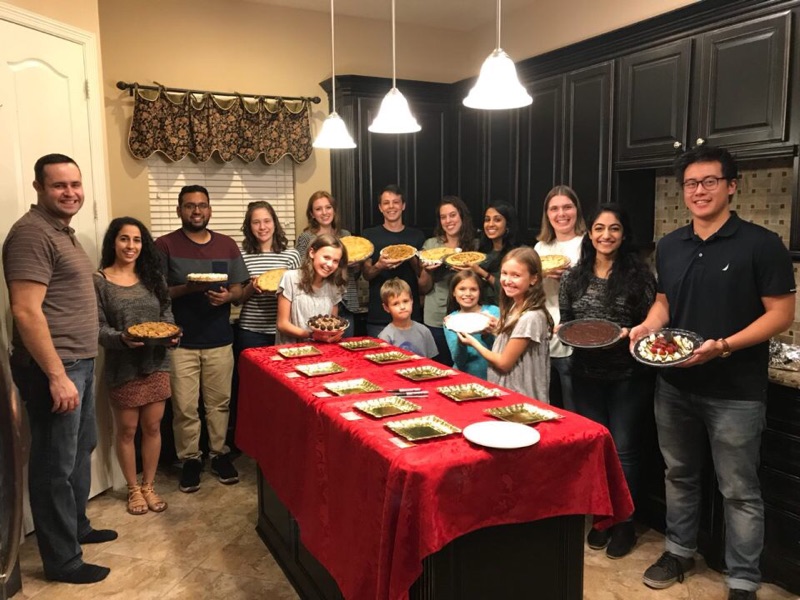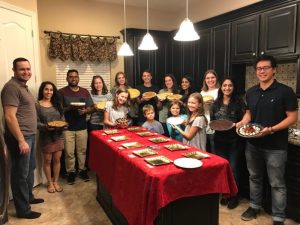As quickly as we walked into the first day of classes, we are now hunkering down for the final push to the end of a great semester. Crazy, right?
It’s incredible to think about how far we have come since the beginning of our summer in Costa Rica. I walked in thinking I knew how to push a product to market – highlighted by the success my senior capstone team garnered during our time at the University of Rochester. Boy…was I wrong.
What does it really take to get your idea out to market? The term “business plan” is just the tip of a very large iceberg – consider the major milestones you have to hit to get seed funding, or how about how many people you need to hire to reach those milestones, or furthermore, how much it will cost to pay them and how that will affect the amount of units that need to be sold to reach a breakeven point. These numbers don’t just arise out of thin air, and neither does the learning process required to understand these points. These are just a few examples of what we covered…in just the past two weeks! Now include the clinical and regulatory requirements to get that product to market, the IP landscape that impinges on your ability to even make the product, or the manufacturing steps required to develop your product. Suddenly, the problem isn’t so black and white anymore.
I am so thankful to be a part of this GMI program. I cannot emphasize enough how helpful it has been to shed light on the areas of medical device design that get overlooked in a capstone experience. As important as it is to be creative, it is just as crucial to have a critical eye of the landscape. Any great idea can be developed, but without the proper knowledge of IP, regulatory, clinical, willingness to adopt, and so on, the world’s next best idea may be dead in the water as quickly as it began.
From my implementation project with Truvent, I learned how crucial it is to validate the need. This project has undergone three iterations prior to this year, and yet we found that it was in our interest to truly understand who our target market was going to be. This may have taken us a step back at the beginning of the year, but we realized that through careful IP and market research that our clients for our technology needed to be EMS personnel in a clinical setting. Understanding who we target is important to the redesign of BVMs – they aren’t concerned about exact numbers (“good enough” will do), but they need a way to know if they are correctly sealing around the patient in a high-stress and quick-moving environment. We thought at the beginning of the year that we just needed to improve upon the current design. Now, we know the constraints that need to be further addressed in a redesign that may veer far left of the current design, and that is okay.
From my marketing class project with Activated, I not only learned about understanding upstream needs in an emergency market, but I probably learned more about myself as a team member and the importance of team dynamics. Having worked with just engineers my entire academic career, it is easy to interact and see things from their perspectives – I think like them too! Throw in MBA students and a few physicians, and suddenly the dynamic changes. I’m not one to admit this lightly, but it has been a struggle for me. Sometimes my expectations did not align with theirs, and conflict arose. If there is one thing I have come to realize from this class, it is that I cannot be the expert in everything. I want to know everything, which is great, but I have to be willing to pass the ball in certain areas to others that have the expertise and learn from it. Always rely on the expertise of others to enhance your understanding. Our solution for improving emergency medicine may not pan out into the next disruptive technology, but I can say with confidence that we have really come a long way from the original need brought to us, and it even may spark further interest in an area of medicine that is so poorly defined and funded. I am proud of our technology, and I am proud of the team that worked through the conflict to get us to the point we are today.
Okay…to that point, I am excited to see the rest of this semester through. It has presented itself with challenges, but it has also shown growth in my professional development that I am extremely proud of. Looking forward, time management will be crucial, especially with the larger course load I will be taking next semester. Setting your own deadlines and sticking to them are so important, and finding time in between with friends is only healthy. To any of those prospective students who stuck it out to the end of this blog, let me give you some “expectation vs. reality” advice:
- Grad school is physically demanding, but a 1-year program can especially feel more difficult at times, emotionally. I personally have an internal block towards committing to the city of Houston because I may be out in 6 months. Don’t let that stop you though – explore!
- Seriously, take a break once in a while. There’s a lot of energy at the beginning of the year to be gung-ho about the projects, but it’s nearly impossible to maintain that energy all semester (unless you’re Dr. Richardson, bless him). Find an outlet, both with friends and personally, to rely on in times of stress.
- When looking at programs, learn about the type of people who will be right there with you. Our GMI program consists of mostly recent graduates with interest in medical device design in underserved populations. None of us have medical training like physicians would, but we have those experts right across the street to help us. I will advocate that we at GMI have a distinct advantage with our group – GMI is not just your team, they are your family. Simple as that, but don’t underestimate how important that becomes when you reach a stressful point in the year.
- You get as much as you put into the program. This is generic advice for anything, but especially relevant here in the medtech industry. This program brings out the self-starter in you, and it’s your passion that will drive how high the threshold of success is.
Happy holidays, from both of my families to yours.





